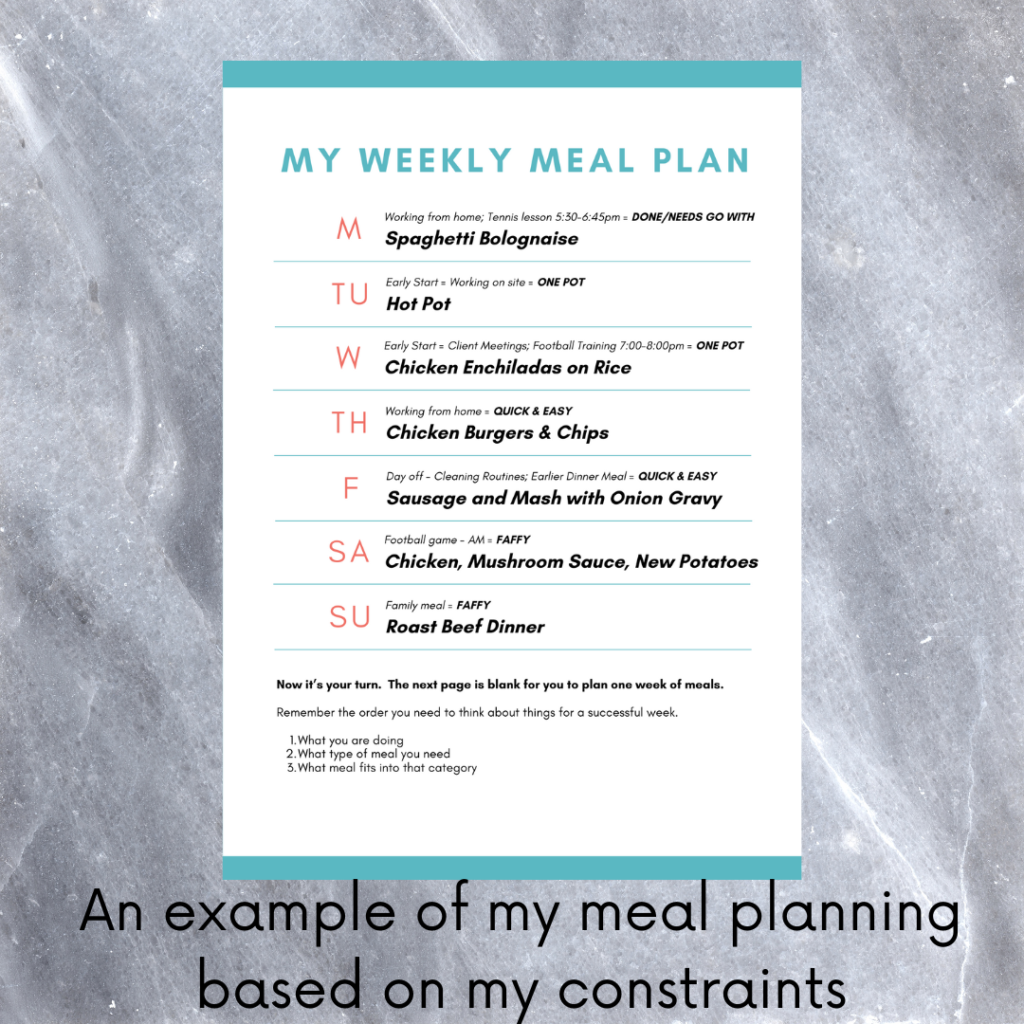Are you tired of the stress and uncertainty that often comes with mealtime? Are you looking to save time, money, and eat healthier, all while reducing food waste? Meal planning might just be the solution you’ve been searching for. If you’re new to this concept, fear not; this guide to meal planning for beginners will walk you through the process step by step.
1. Set Clear Goals
Begin by identifying your meal planning goals. Whether it’s saving money, eating healthier, or simply reducing stress, understanding your objectives will help you tailor your approach.
2. Create a Weekly Calendar
Start by mapping out a weekly calendar, including all meals and snacks. This visual aid provides structure and helps you visualize your plan.

3. Inventory and Shopping
Take stock of what you already have in your kitchen. This prevents overbuying and helps you create meals based on what you already own. Make a shopping list of items you’ll need to complete your meals. My workbook, How to write a Meal Plan You Can Follow, contains a sectioned grocery list. This is a HUGE game changer for shopping. You will save both time and money.

4. Choose Recipes
Select recipes that align with your goals and suit your tastes. Also consider what constraints you have on each day. Will you be short of time? Do you have appointments to keep? Choose the right meal type for your day.

5. Prep and Cook in Batches
Dedicate a portion of your day or week to cooking and preparing ingredients in bulk. This will save you time and reduce the hassle of cooking every day. But don’t be put off meal planning if you can’t do this. Meal planning and meal prepping are two different activities. Choose the right type of meal for the right day and you won’t need to spend hours prepping. The second step in my workbook will explain this and walk you through finding the best type of meal for the day.
6. Portion Control
Be mindful of portion sizes to avoid overeating or wasting food. Invest in reusable containers to store your meals and snacks conveniently. Leftovers are a godsend! My best tip is to freeze leftovers and have at least one planned day of eating them up! Easy meal planning for beginners!
7. Plan for Flexibility
Life is unpredictable, so plan for flexibility. Have some backup options for days when cooking is not feasible. This is when your frozen leftovers can also come into play and save the day!

8. Experiment and Learn
Meal planning is a journey. Don’t be discouraged if you face challenges initially. Experiment, learn, and adapt as you go.
9. Track Your Progress
Keep a meal planning journal to note what works and what doesn’t. This will help you refine your process over time.
10. Celebrate Success
Celebrate your meal planning victories, whether it’s saving money, losing weight, or simply enjoying stress-free meals. Positive reinforcement can keep you motivated.
In conclusion, meal planning is a powerful tool that can transform the way you eat and live. It may seem overwhelming at first, but with practice and patience, it becomes second nature. Start with clear goals, create a plan, and adjust as needed. Before you know it, you’ll be reaping the benefits of efficient, cost-effective, and healthier meal planning. Give it a try and embark on a journey toward a better, more organized way of eating.
And remember, I have a super affordable meal planning for beginners workbook available to set you up for success!
It is in my Etsy Store and is an instant download to get you started right away!
Good To Know Tip


